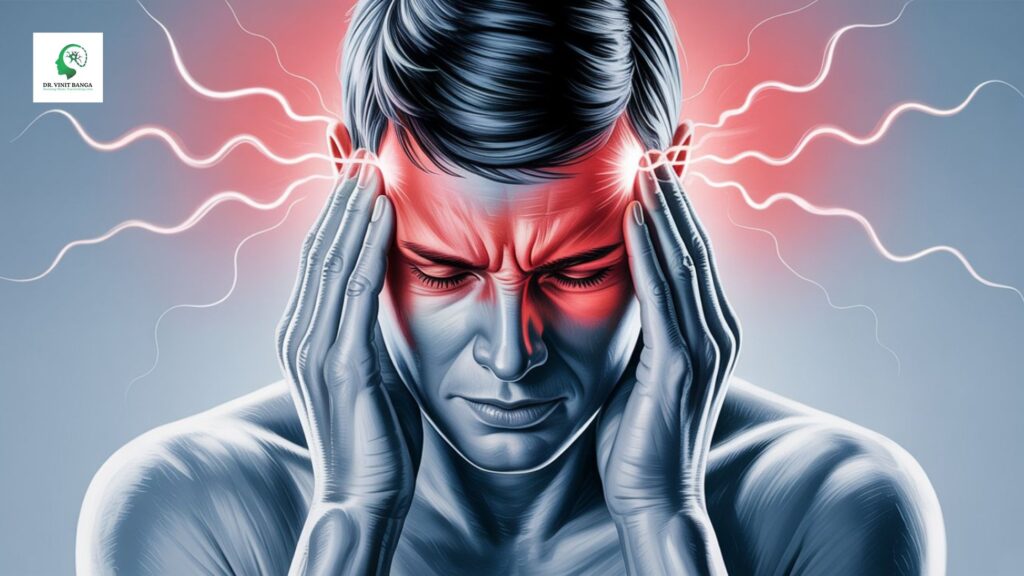Migraines are more than just severe headaches. They are a complex neurological condition that can interfere with work, daily routines, and overall quality of life. While many people assume migraines are the same for everyone, the truth is that there are different types of migraine, each with unique features and challenges. Understanding these differences helps patients and doctors choose the right treatment strategies.
In this blog, we will explore three important types—Migraine with Aura, Chronic Migraine, and Silent Migraine—while also discussing causes, symptoms, diagnosis, and treatment approaches. If you are struggling with recurring headaches and suspect migraines, consulting a qualified Migraine Specialist in Faridabad can help you find lasting relief.
What Are Migraines?
Migraines are neurological episodes that cause throbbing or pulsating head pain, often accompanied by nausea, sensitivity to light, or visual disturbances. Unlike regular headaches, migraines are usually intense and can last for hours or even days.
Doctors classify migraines into different types based on their symptoms and duration. Let’s dive deeper into the types of migraine you should know.

1. Migraine With Aura
What Is Aura?
Aura is a collection of neurological symptoms that usually appear before the headache phase. These can include:
- Visual disturbances like flashing lights, zigzag lines, or blind spots
- Sensory changes such as tingling in the face or hands
- Difficulty speaking or understanding language
Symptoms of Migraine With Aura
- Visual flashes or shimmering lights
- Temporary vision loss in one or both eyes
- Pins-and-needles sensations in limbs
- Difficulty forming sentences
- Throbbing head pain following aura
Causes and Triggers
- Stress and lack of sleep
- Bright or flickering lights
- Hormonal changes
- Dehydration
- Certain foods like chocolate, aged cheese, and caffeine
Treatment for Migraine With Aura
- Medications: Triptans, anti-nausea drugs, and pain relievers
- Lifestyle Adjustments: Stress management, regular exercise, hydration
- Preventive Care: Daily medications or supplements prescribed by a neurologist
2. Chronic Migraine
Chronic migraine is one of the most disabling types of migraine. A person is considered to have chronic migraine if:
- They experience headaches for 15 or more days per month
- At least 8 of those days include migraine features like pulsating pain, nausea, or sensitivity to light
Symptoms of Chronic Migraine
- Frequent, severe headaches
- Neck stiffness
- Fatigue and irritability
- Trouble concentrating
- Depression or anxiety from prolonged suffering
Risk Factors
- Overuse of pain medications (medication-overuse headache)
- Untreated migraine with aura
- Family history of migraines
- Obesity or hormonal imbalance
Treatment Options
- Medications: Preventive drugs such as beta-blockers, antidepressants, or anti-seizure medicines
- Botox Injections: FDA-approved for chronic migraine management
- CGRP Inhibitors: New medications that block migraine-causing proteins
- Therapy: Cognitive-behavioral therapy and relaxation techniques
A Migraine Specialist in Faridabad can evaluate your symptoms and design a personalized treatment plan for chronic migraines.
3. Silent Migraine
Also called “Acephalgic Migraine,” silent migraines occur without the typical headache phase. Patients experience aura and other migraine symptoms, but no head pain.
Symptoms of Silent Migraine
- Visual disturbances (flashing lights, blind spots)
- Speech problems
- Dizziness or vertigo
- Nausea without headache
- Sensitivity to light and sound
Why Silent Migraines Are Confusing
Since there is no headache, many people mistake silent migraines for other neurological conditions like stroke or epilepsy. That’s why accurate diagnosis is crucial.
Treatment Approaches
- Lifestyle changes, such as consistent sleep and stress management
- Medications for nausea and aura symptoms
- Preventive drugs for frequent silent migraines
Other Types of Migraine Worth Knowing
While Aura, Chronic, and Silent Migraines are the focus, other types also exist:
- Hemiplegic Migraine: Causes temporary paralysis or weakness on one side of the body
- Retinal Migraine: Leads to temporary vision loss in one eye
- Menstrual Migraine: Triggered by hormonal changes during a woman’s cycle
- Vestibular Migraine: Involves dizziness and balance issues
Diagnosis of Migraine
Diagnosing migraines involves:
- Detailed medical history
- Symptom tracking
- Neurological examination
- Brain imaging (in rare cases)
A specialist may ask you to maintain a migraine diary to record triggers, frequency, and duration. This helps in determining which type of migraine you are experiencing.
Managing and Preventing Migraines
Lifestyle Modifications
- Maintain a regular sleep schedule
- Stay hydrated
- Avoid skipping meals
- Limit caffeine and alcohol
- Practice stress-relieving techniques like meditation
Dietary Adjustments
- Avoid trigger foods such as processed meats, aged cheeses, and artificial sweeteners
- Include magnesium-rich foods (nuts, seeds, leafy greens)
- Stay consistent with meal timings
Medical Treatment
- Acute treatment for immediate relief
- Preventive medications for long-term management
- Alternative therapies like acupuncture, yoga, and physiotherapy
Why Consult a Migraine Specialist?
Migraines can often resemble other neurological conditions. A Migraine Specialist in Faridabad can help you:
- Identify the correct type of migraine
- Customize treatment according to your condition
- Monitor and reduce the frequency of attacks
- Provide advanced therapies like Botox or CGRP inhibitors
FAQs on Types of Migraine
1. What are the most common types of migraine?
The most common types are migraine with aura, chronic migraine, and silent migraine. Each has distinct symptoms and treatment needs.
2. Can migraines occur without headache pain?
Yes. These are called silent migraines or acephalgic migraines. Patients experience aura and other symptoms but no head pain.
3. How do doctors diagnose different types of migraine?
Doctors use medical history, symptom diaries, and sometimes brain imaging to identify the specific type of migraine.
4. Are chronic migraines curable?
Chronic migraines are not completely curable but can be effectively managed with preventive medications, lifestyle changes, and advanced therapies.
5. When should I see a Migraine Specialist in Faridabad?
If you experience frequent or disabling headaches, vision problems, or neurological symptoms, you should consult a migraine specialist for proper diagnosis and treatment.
Final Thoughts
Migraines come in many forms, and understanding the types of migraine is the first step toward better treatment. Whether it is migraine with aura, chronic migraine, or silent migraine, each type requires a tailored approach. With early diagnosis and expert guidance, patients can control symptoms and improve their quality of life.
If you are dealing with recurring headaches or complex symptoms, don’t wait. Consult a trusted Migraine Specialist in Faridabad to find the right treatment and regain control of your health.


